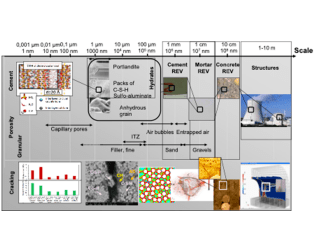If there are no cracks, then it is not a cementitious material ?
Concrete is the most widely used material in the world, with approximately 1 cubic meter per capita being cast each year. It accounts for around 7% of global greenhouse gas emissions. A lot of research is currently being done to limit its environmental impact. New binders are being designed to limit greenhouse gas emissions linked to construction, and construction waste recycling is being developed to reduce the use of natural resources. These new materials, such as cement-based ones, develop a network of cracks at different scales even before they can withstand external loads!
The presentation aims to study the development of this cracking, which seems inherent in construction materials based on binders. The cracks result from chemical reactions that, in parallel, provide the cohesion necessary for the strength of structures, as well as from internal relative humidity and thermal variations linked to these reactions and to external environmental conditions. Internal stresses are generated both by strain incompatibilities at the hydrate (µm) and aggregate (mm) scales, exacerbated by gradients at the structural element scale. This multiscale cracking could partly explain the low tensile strength of binder-based materials. Experimental results and numerical simulations at different scales are presented, demonstrating the complexity of the phenomena involved and the modeling challenges that require the use of chemistry, physics, and mechanics.

